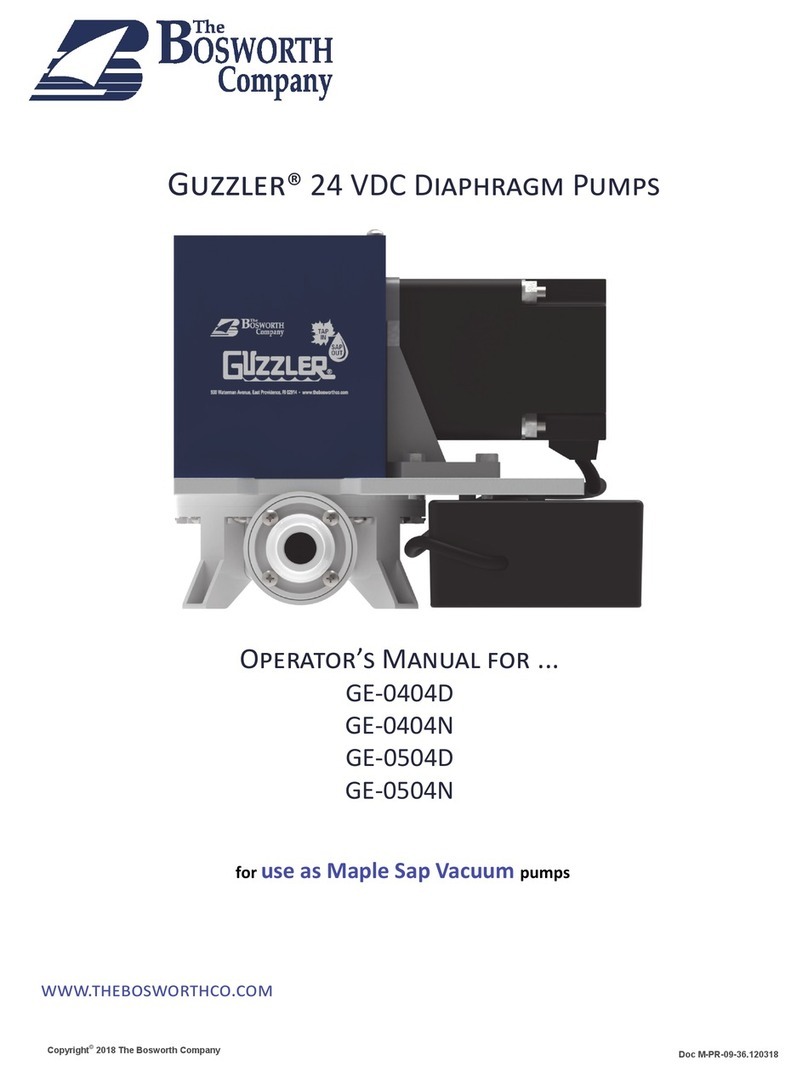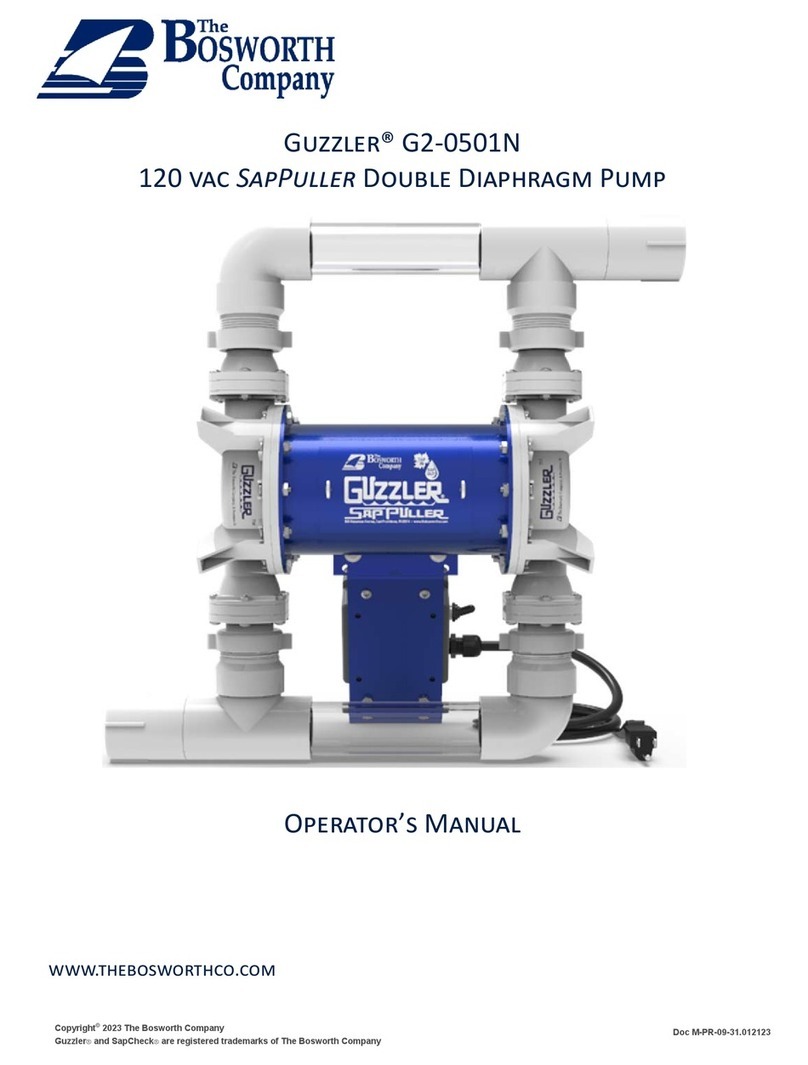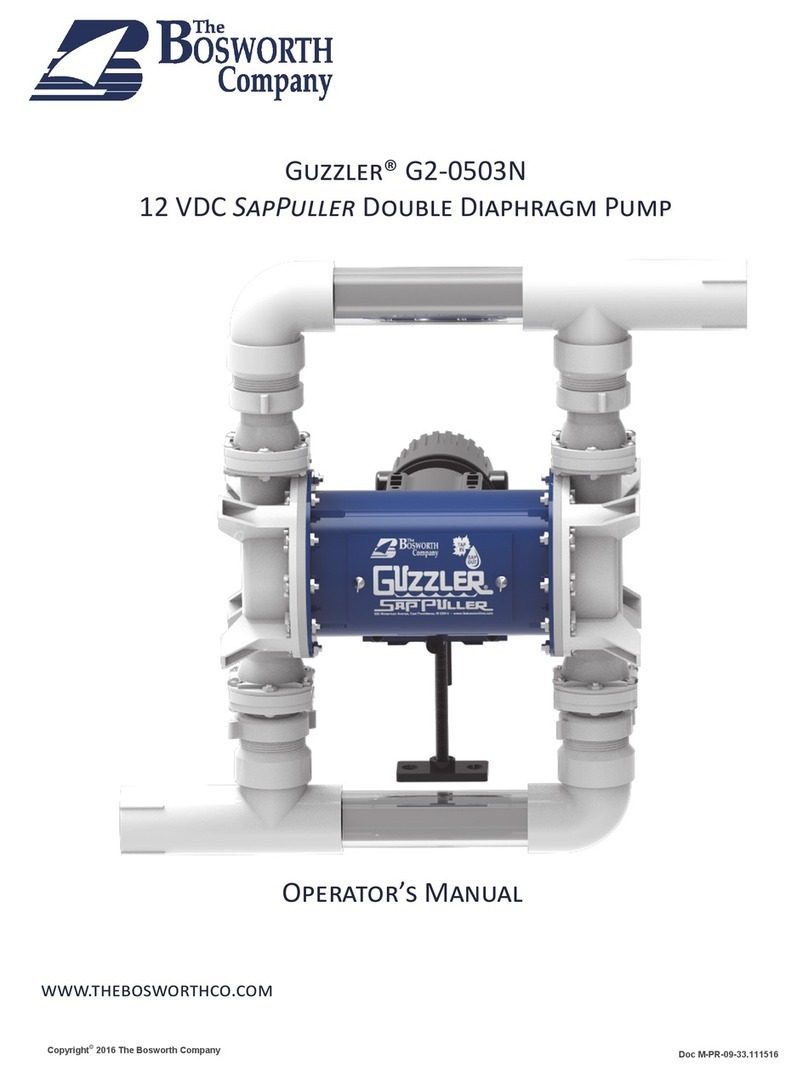
Installation and Operating Information
4
The Bosworth Company
Doc M-09-31-111516
It is best to install your Guzzler G2 SapPuller pump at or above col-
lection tank level to avoid shortening diaphragm life.
Your Guzzler G2 SapPuller pump should be securely mounted to a
mounting surface prior to operation. The support leg of the pump
has a mounting hole that accommodates a 1/4 in (6.4 mm) diame-
ter bolt or screw. (Figure 3) The inlet manifold of the pump should
be secured to the mounting surface using the two “C”-clamps pro-
vided with the pump. (Figure 4)
Your Guzzler G2 SapPuller is equipped either with 1-1/4 in (3.2 cm)
Female (inside threads) or 1-1/4 in (3.2 cm) Male (outside threads)
ports on the inlet and outlet manifolds. Depending on how your
pump is configured, you can connect to your sap lines by screwing
a 1-1/4 in (3.2 cm) fitting either into or onto the pump manifold ports. We recommend connecting your pump
to the mainline with Quick Connect Couplers so that the pump can be easily disconnected from the line.
The pump should be protected from the weather. If it is placed in an enclosure, be sure to allow adequate air-
flow around the motor for cooling.
The Guzzler G2-0501N SapPuller requires 115 VAC power. If power is not readily available, it can be provided
from a generator that supports a minimum 200 running waoutput. (The motor is rated for 1.44 amps at full
load.) Be sure that the generator is actually delivering 115 VAC, as deviaons from this voltage – lower or higher
– will result in improper motor operaon.
The Guzzler G2 SapPuller pump is capable of developing 22 in. of Hg
vacuum (0.7 bar), but it is a low-cfm (cubic feet of air per minute)
pump. This means that even very small leaks can prevent the pump
from delivering its rated vacuum. Maintain your tap lines to keep your
system tight and address problems that can cause vacuum leaks.
When installing the Guzzler SapPuller, we recommend that you install
a shut-offvalve and a vacuum gauge – in that sequence – “in front of”
the pump; i.e., just before your connecon to the pump’s inlet mani-
fold. (Figure 5)
If you experience a loss of vacuum in your system – as registered in the
gauge near the pump – slowly turn the shut-offvalve to isolate the
pump from your mainline. DO NOT SHUT THE VALVE SUDDENLY, AS
PUMP DAMAGE MAY RESULT. If the gauge
begins to return to normal operang vacu-
um, then the pump is working properly and
the source of the leak is somewhere in
your sap lines or taps. If, on the other
hand, the pump fails to recover normal
vacuum, then the pump is the source of
the problem, and you should inspect the
pump diaphragms and/or valves for any
holes or tears. In the case of the valves,
check for any material that may have en-
tered the pump and lodged in the valve
body, prevenng the valve from proper
opening and closing.
Pump Support Leg with mounng hole
Figure 3
Secure inlet manifold with C-clamps
(provided)
Figure 4
Schemac showing recommended shut-offvalve and vacuum gauge
installed on inlet side of pump.
Figure 5




























